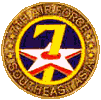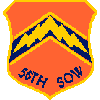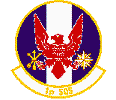THE DAY WE LOS "ZEKE"
DATE: 17 June 1972
SORTIE #: 91
SORTIE LENGTH: 5.4
COMBAT TIME: 270.5
AIRCRAFT: A-1E-5 135-215
by Byron Hukee
My journal entry for 17 June 1972:
Hobo 43 wingie. Doz for a downed CH-53 north of Khong Sedone with Zeke as lead .... [This was not a SAR situation, as the crew had previously been recovered.] We replaced other Hobos who were working the area prior to our arrival .... We orbited over the CH-53 crash site while a team landed to check the feasibility of lifting it out..... We worked the Doz about 2 hours. Our plan was to get a quick strike, recover at Ubon to refuel and RTB [return to base]. Weather in the target area was about 6,500 broken. We worked a target east of the river near Khong Sedone. We did not observe any ground fire and were working from about a 6,000-foot roll in altitude. On Zeke's second rocket pass, he got hit as he was firing his rockets. I saw the heavy smoke trailing from his aircraft. He said nothing. The FAC asked, "Are you all right?" The only thing I could say was, "Are you all right, pull out." He went in with the plane. There was a large fireball. I went back to the Doz frequency and told the other Hobos what had happened. Jim Harding was leading that flight and he came down about 15 klicks to the south to run any possible SAR. I had to RTB because of fuel and started heading for Ubon but saw that I had enough fuel to make it home. I met the Sandys on my way home and told them there was no survivor. I was met in the de-arm area and was taken to the TUOC. I concluded that Zeke must have been hit in the cockpit and incapacitated. Airbursts would have been hidden above the clouds.
Obviously, this mission stands out in my mind today as much as any of those I flew 26 years ago. Sometimes I can't remember where I put my glasses five minutes ago, but this mission is as clear as if it happened yesterday. The first part of the mission was simply orbiting over the downed CH-53 and waiting, waiting, waiting. After what seemed like hours (because it was!), we were released to contact a Raven FAC as the next Hobos checked in on freq. We were about three and a half hours into the mission at this time. The FAC said he had a target near Khong Sedone. I had worked this area the day before. Zeke contacted the FAC, and he gave us the standard target brief to include the possibility of up to 23mm AAA in the area. Now, 26 years later, I do not recall whether or not the FAC had reported any active AAA positions, but I don't believe he did.
We had each made about five passes and had just switched to rockets. No ground fire had been observed by any of us. We were in a left-hand wheel and were generally rolling in from the northeast through the northwest. As Zeke was on his rocket pass, all looked normal. The smoke started coming out of the rear of the pod at about the altitude I expected, indicating that he was firing his rockets. The next thing I saw was much darker, heavier smoke coming from what appeared to be the same location as the rocket smoke. From the time I saw this until Zeke's Skyraider impacted the ground, it was probably fewer than five seconds. We were firing our rockets at around 3,500 to 4,000 feet and bottoming out at about 2,000 feet. Since I watched his plane the entire way down to the ground, I knew there was no extraction. This is not to say there was no attempt, but there was definitely no extraction. I immediately thought a hundred things at once - none of them particularly logical. I wanted the FAC to tell me where the gun was so I could roll in on it and kill it. The FAC saw no gun; only the result of its work. After about two minutes, I realized fully what had just occurred and began to act more rationally. I called the other Hobos and waited until they arrived on the scene. I briefed them on the situation and turned for Ubon. I passed on my black assessment of the possibility of Zeke's surviving the crash; I was that sure. We didn't need any more A-1s downed while making low passes over a crash site that was not survivable. I had never in my life felt such a sheer and utter sense of despair. Mostly, I felt a great deal of helplessness. It was not easy to concentrate on flying the plane during these moments. I realized there was no need to land at Ubon, as I had enough fuel to make it back to NKP. The 45 minutes it took to get back seemed an eternity. I met the Sandys en route to the possible SAR and again gave them my negative assessment. Was I wrong in doing so? To this day, I believe my decision was correct. There was no hope of survival.
I had heard the phrase "Golden BB" in reference to the round that has your name on it. This situation fit that to a "T." The round had to have hit the plane for this to happen. Had it missed, the airburst would have been well above it and would have exploded harmlessly.
Much later, a ground team located the crash site and recovered Zeke's remains. Shrapnel damage to items in the cockpit indicated that Zeke had been incapacitated when a round of high-explosive AAA detonated very near the cockpit. Maj. Encinas was the final American A-1 pilot to die in SEA. The name of Maj. Esequiel M. Encinas on the Vietnam Memorial Wall is on panel 01W, line 043, reference number 148.




